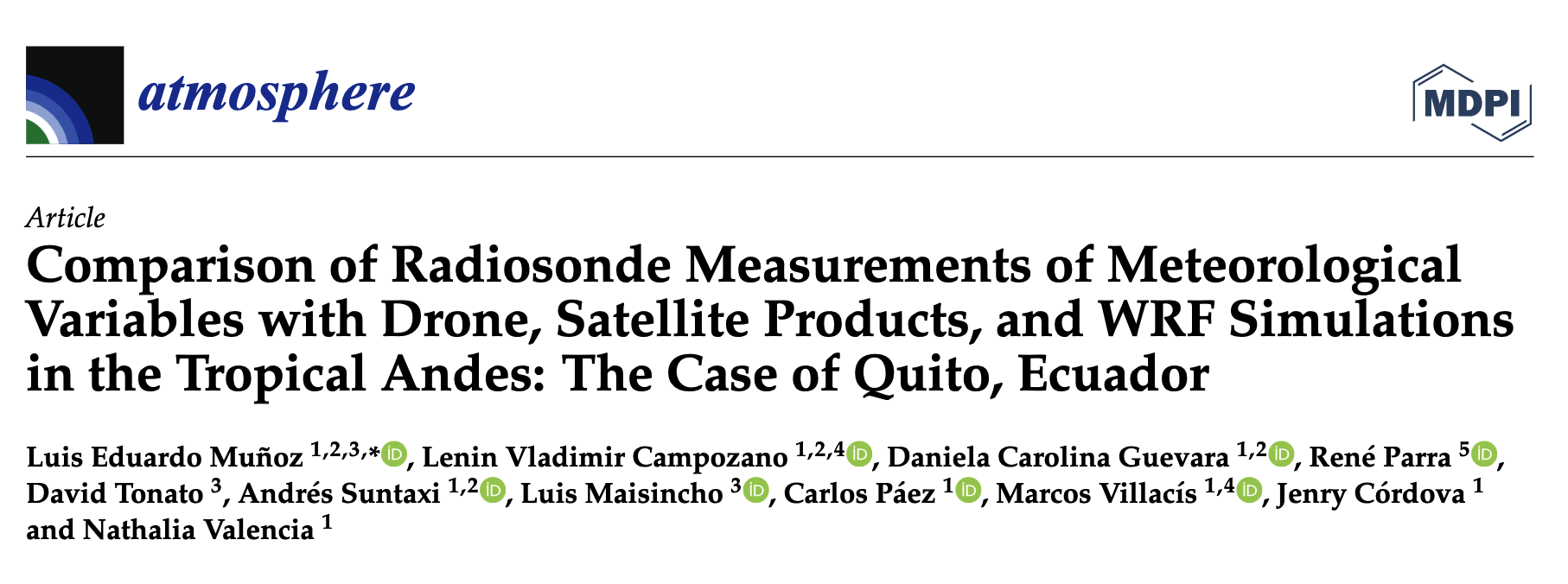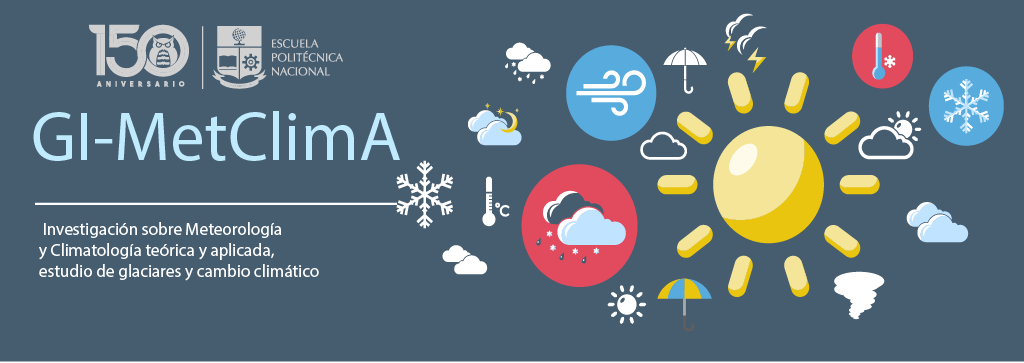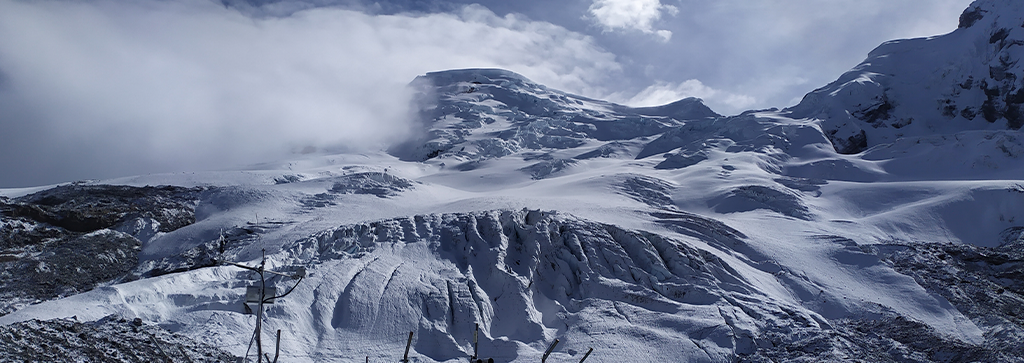
Nuevo artículo Q2
En el mes de enero - 2023 el grupo MetClima realizó la publicación de un nuevo artículo científico.
Título: Comparison of Radiosonde Measurements of Meteorological Variables with Drone, Satellite Products, and WRF Simulations in the Tropical Andes: The Case of Quito, Ecuador.
Resumen: Abstract: Radiosondes are the most widely used method for studies of vertical atmospheric behavior, but the high costs associated, and the logistic limitations have forced researchers to look for alternative methods for atmospheric profiling, such as lidar and satellite measurements, or modeling. However, the assessment of the accuracy of alternative methods is recommended, especially in complex terrain, such as the tropical Andes. In this research, the atmospheric profiling of satellite data from AIRS and MODIS products, simulations of the Weather Research and Forecasting model, WRF, and drone measurements are evaluated for a campaign of 10 radio soundings, between August 2021 and January 2022. Additionally, the capability to capture the planetary boundary layer height, hPBL, is studied. The measurements were conducted at Izobamba station near Quito, Ecuador. Temperature, T, Dew Point Temperature, TD, Mixing Ratio, Q, and Potential Temperature, PT, were evaluated from 0 to 300 m above ground level (magl.) for satellite, WRF, and drone data, and from 0 km to 15 km for satellite and WRF data. Additionally, the capability to capture the planetary boundary layer height, HPBL, was assessed. The results show that drone profiles best represented the magnitude of the analyzed variables showing mean RMSE of 0.79 for T, but the noise of the measurements caused a low correlation with radio sounding profiles, which was partially corrected with a quadratic fit on the profile. The WRF results achieved a positive representation in terms of correlation, but error metrics show that there are remarkable differences in magnitude in the first 300 magl., up to the tropopause height, which surpasses satellite representations for all variables. The MODIS profiles do not generally perform well due to their low vertical resolution and limitations with cloud coverage. However, AIRS data, despite its low resolution, show a better representation of vertical profiles than MODIS, for T and TD, surpassing WRF simulations in some dates. For the HPBL, the WRF results show that physical and atmospheric conditions limit its determination, and the methods and conditioning factors should be further analyzed. aquí




